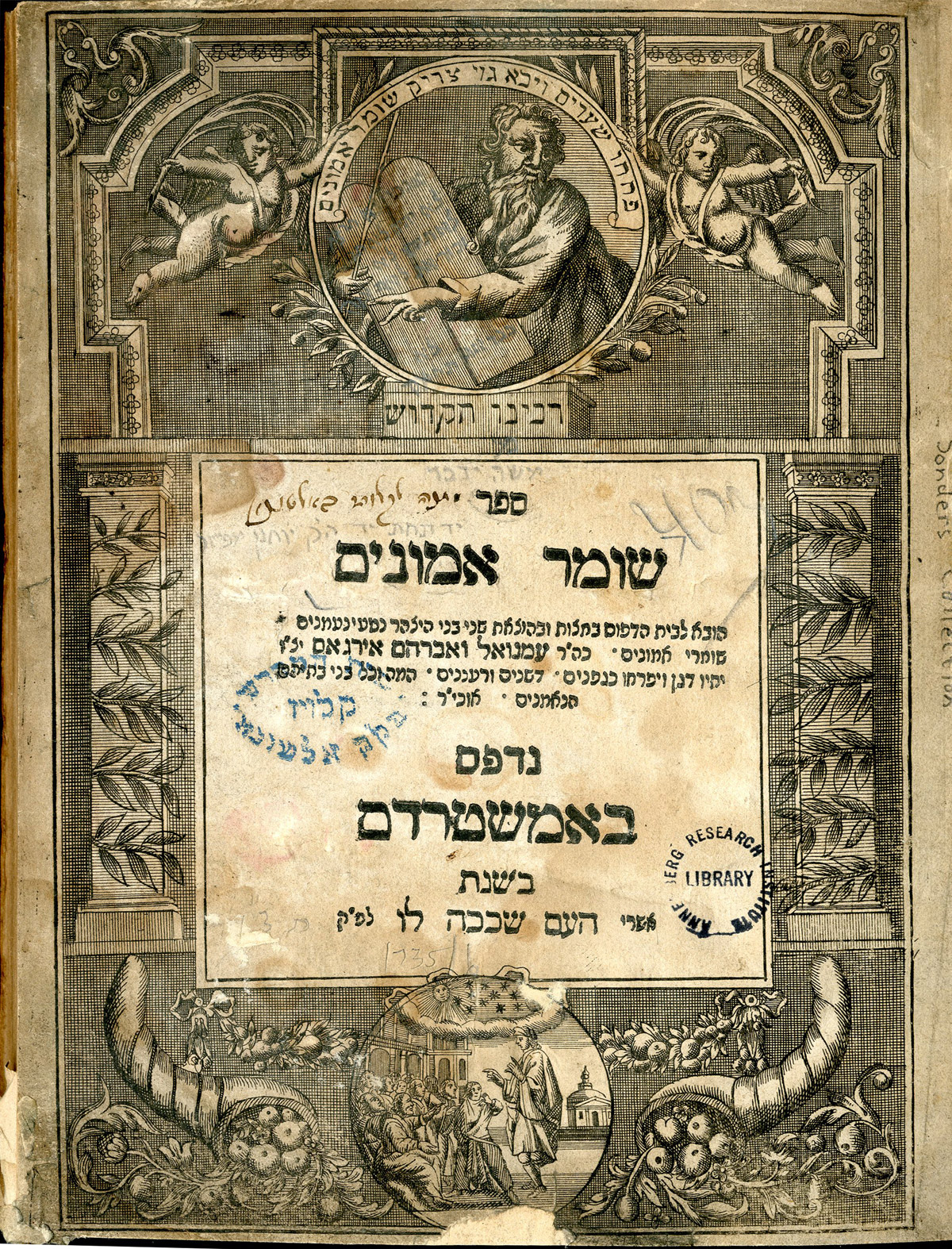In the first half of the 18th century, the Tuscan port city of Livorno was a center of Jewish urban and intellectual life in the Mediterranean and had the largest Sefardi community in Europe, with Amsterdam second. Joseph Ergas (1685-1730), a descendant of a converso family, was an erudite, well known rabbi and kabbalist in Livorno. That's where he wrote his last book, the Sefer Shomer Emunim, a comprehensive description of Lurianic Kabbalah in a popular dialogical form. The book was edited by his sons and printed posthumously in 1737 in Amsterdam. The haskamah is signed by a number of other Livorno rabbis. Ergas' book is important for understanding the place of the doctrine of tsimtsum in European intellectual history, because Ergas submits one of the most refined arguments for a purely metaphorical understanding of the tsimtsum (the contraction of G''d before the creation of the world), as opposed to the literal reading of it by the disciples of Chajim Vital and by the sabbatianists.
Of special interest is the engraved baroque title page of the Sefer Shomer Emunim (i.e."Guardian of the Faithful") which above the title of the book in the center shows Moses, rabbenu hakadosh, with the tablets of the Law, indicating pious Torah observance, but surrounded by two baroque putti, rather characteristic for catholic art. The engraving in the center under the title of the book depicts a male scholar teaching a group of men of mixed ages in a public square, showing a baroque church and palace in the background. Although the book was printed in Amsterdam, this allegory hints to Livorno or Italy (there were no such churches and palaces in Amsterdam), with Jews claiming and having their place in the public sphere in the early 18th century. Furthermore, this allegory can be interpreted as Kabbalah going exoteric, by public teaching and by print in a deliciously equipped book.
